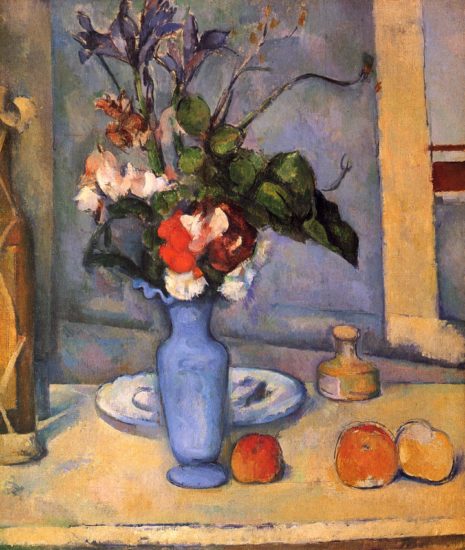
- This event has passed.

PAINTING THROUGH MODERN MASTERS: Cezanne and Cubism
Details
- compositional improvisation and discovery
- warm and cool color to create space
- subjective experience taking precedent over objective knowledge
- the painted mark as a unit of personal “world building”
- How did Cezanne “change the game” of painting?
- What is the primacy of the rectangle of the canvas and why is it important?
- How does formal experimentation affect our paths as painters?
WEEKLY SESSIONS:
Week 1: A Power Point presentation of Cezanne’s work, discussing the nature of his project, both in relation to his internal experience, as well as through the external formal invention, covering the role of rigorous perceptual investigation, the precedence of experience over knowledge, his mark as unit of image structure, and the radical role of compositional improvisation in relation to the rectangle. The Power Point presentation will be followed by a demonstration of Cezanne’s methodology through a graphite drawing of a still life. A LIVE ongoing Q&A will accompany each session.
Week 2: Beginning a still life painting in the modality of Cezanne. The sessions will be streamed through 3 cameras focusing on the development on the canvas, color mixing on the palette, and an over-the-shoulder view of the mark making.
Week 3: Continuing the still life painting and deepening the discussion about perception, composition and marking. What does it entail to return to a painting that is mid-stride but the paint is dry? How does one continue to mark in an open and fresh way? Also, how does one attend to the demands of the objective motif and also the accruing complexity and demands of the developing composition?
Week 4: Further developing the painting in the mode of Cezanne. Looking at the implications for us now in relation to our own personal paths as painters and in relation to painting in the 21st century.
Week 5: Power Point presentation of the development of Analytic Cubism by Picasso and Braque, discussing the nature of their exploration and the specific formal devices involved, such as a limited palette, short staccato marking and edge quality. Followed by a drawing demonstration in charcoal of a still life developed through the lens of Analytic Cubism.
Week 6: Beginning a still life painting in the mode of Analytic Cubism. Discussing the mode of depiction that is relying on invention more than on observation of the motif. Looking at why Cubism was such a radical development and how it affected 20th century painting.
Week 7: Continuing the development of the Analytic Cubist painting and exploring the developing compositional demands within the parameters of the Cubist project.
Week 8: Further developing the still life painting and discussing the possibilities and ramifications for the students in relation to their own work.
All sessions will be streamed in HIGH DEFINITION, providing greatly increased visual acuity of the painted surface and demonstrations.
All sessions will be recorded, archived and available for repeated viewing.
A Webinar Link will be sent out upon registration.
To register simply click on the “+” sign below.
MaterialsThis event has passed.